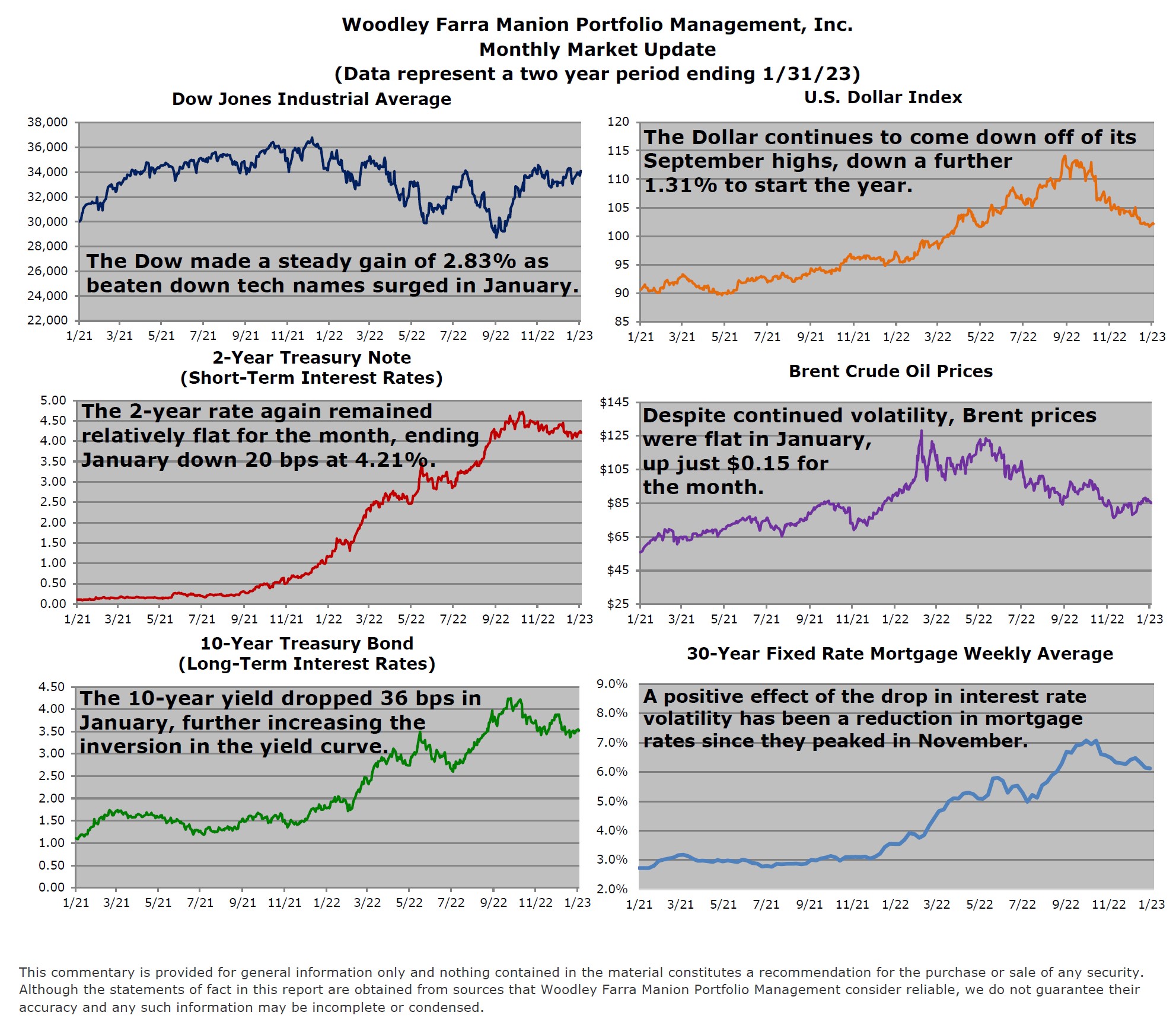
Stocks rallied to start the year, with the S&P 500 climbing 6.3% in January. Bullish inflation data and a lower U.S. dollar provided fuel for the rally. The Federal Reserve slowed interest rate hikes to just a 0.25% increase on February 1st. The milder inflation data and slowing pace of interest rate hikes have led to a large decline in interest rate volatility. While stock market volatility tends to grab headlines, interest rate volatility has gained relevance as a key market indicator in the last year. Interest rate volatility has a direct impact on the economy through mortgage rates. Higher interest rate volatility results in a larger spread between mortgage rates and U.S. treasuries, all else equal. The chart below shows the dramatic pullback in the ICE MOVE index, which tracks the implied (forward-looking) volatility of U.S. treasury interest rates. The MOVE index is analogous to the VIX index (S&P 500 implied volatility index), but for bonds. Less uncertainty surrounding the future path of interest rates is giving investors and lenders greater confidence.
The U.S. economy continued to shrug off higher interest rates in the fourth quarter, growing 2.9% on a seasonally and inflation-adjusted, annualized basis. Thus far, weakness in a few segments of the economy (housing, used cars, technology) has been offset by strength elsewhere (travel, auto & aerospace manufacturing, energy). And despite tech layoffs grabbing new headlines, job openings have been rising in recent months, exceeding 11 million positions. While one month doesn’t make a year, January’s financial and economic data offered cause for optimism. The probability of achieving a soft landing – rate hikes to slow inflation, while avoiding a recession – has vastly improved in recent months.

-Jared J. Ruxer, CFA, MS
